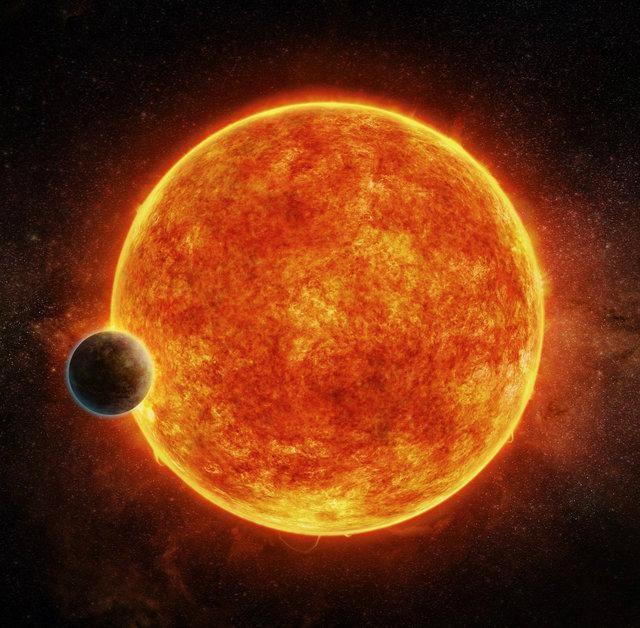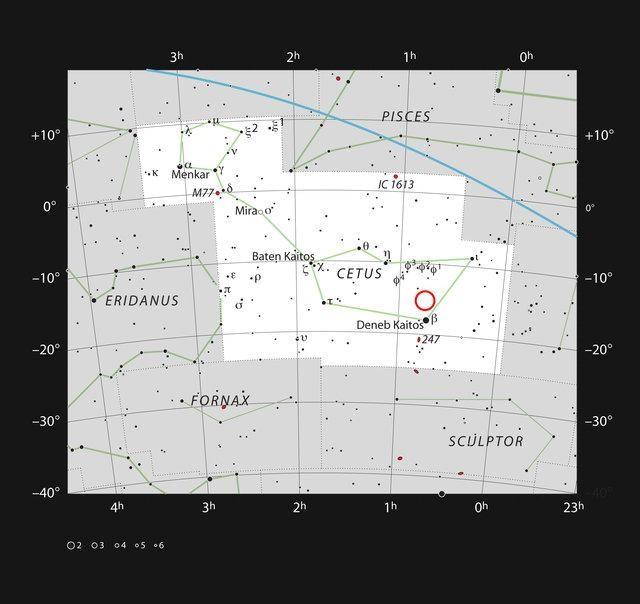Possibly habitable super-Earth discovered
A massive exoplanet has just been discovered orbiting a nearby star, and it just so happens to be in said star’s Goldilocks zone – meaning this super-Earth could potentially support life.

“This is the most exciting exoplanet I’ve seen in the past decade,” gushed Harvard-Smithsonian Center for Astrophysics astronomer and lead study author Dr. Jason Dittmann. “We could hardly hope for a better target to perform one of the biggest quests in science – searching for evidence of life beyond Earth.”
Approximately 1.43 times larger than our own planet, the newly found exoplanet LHS 1140b has a diameter measuring 18,221 km (11,322 miles). This makes its size about 40% bigger than Earth’s, which has a diameter of 12,742 km (7.918 miles).
LHS 1140b is 6.6. times as massive as our planet, so it should be an extremely dense world composed of rock, harboring a core of dense iron. “A simple structural mode consisting of a dense iron core surrounded by a magnesium silicate mantle can explain the observed mass and diameter,” said Dr. Dittmann and his team of astronomers. “We conclude that LHS 1140b is a rocky planet without a substantial gas envelope.”
LHS 1140b is in the habitable zone of a tiny, dim, cool red dwarf called LHS 1140, which is between 39 and 40 light-years from Earth. Belonging to the Cetus constellation, this star’s size is only a fifth of our Sun’s.
Completely orbiting this star takes LHS 1140b a total of 24.7 days.
LHS 1140b is much closer to its star than the Earth is to the Sun – around 10 times closer, which puts it smack dab in the middle of the habitable zone. The amount of sunlight LHS 1140b receives from its star is only half of that received by the Earth from the Sun.
The presence of an atmosphere… and life?
“For life as we know it to exist, a planet must have liquid surface water and retain an atmosphere,” the astronomers explained.
“When red dwarf stars are young, they are known to emit radiation that can be damaging for the atmospheres of the planets that orbit them.”
While this sounds like bad news, LHS 1140b’s immense size could have led to the development of an atmosphere conducive to the evolution of life.
“In this case, LHS 1140b’s large size means that a magma ocean could have existed on its surface for millions of years,” said the researchers. “This seething ocean of lava could feed steam into the atmosphere long after the star has calmed to its current, steady glow, replenishing the planet with water.”
“The present conditions of the red dwarf are particularly favorable – LHS 1140 spins more slowly and emits less high-energy radiation than other similar low-mass stars,” said study co-author and Geneva Observatory in Switzerland astronomer Dr. Nicola Astudillo-Defru.
Its parent star’s age of 5 billion years could have also possibly played a role in the development of life on LHS 1140b.
“Based on the fact that the star is slowly rotating and relatively inactive, we are actually fairly sure that the system is older than 5 billion years old in age,” Dittman explained to Seeker. “To contrast, the Earth and Sun are about 4.5 billion years old. So we actually think that this planet is older in age than the Earth, plenty of time for life to have possibly sprung up!”
Gathering evidence
The scientists first detected the exoplanet in 2014, using the MEarth-South Observatory, which consists of a group of eight identical telescopes with 16-inch apertures. These telescopes typically observe tiny stars around 33% or less than our Sun’s size, which are found some 100 light-years from said Sun.
Locating and describing LHS 1140b was made possible using the transit method. This is when the amount of light a planet blocks when it passes before a star is measured.
As a follow-up, ESO’s HARPS instrument also monitored LHS 1140b’s location to confirm the exoplanet’s existence.

“When we first had hints of this planet's existence, we actually did not know the orbital period of planet, so we couldn’t tell if it was in the habitable-zone or not,” said Dittman. “The duration of the transit was long, so we at least suspected the period was fairly long. However, it took a long time after that first tantalizing hint of the planet to really confirm that it was in the habitable zone.”
Using the Hubble Space Telescope, the team is now working to figure out the composition of the planet’s atmosphere.
“We have already been awarded time from Hubble to look at the planet’s atmosphere, and the first of that data was gathered in January,” stated Dittman. “I haven’t fully delved into the data, and we need much more data, but the process of further studying this planet is already underway! We have more time with Hubble awarded but yet to be scheduled, and we have also asked for additional time in this year's call for Hubble Space Telescope proposals, so we're very excited to see what we find out!”
Astronomers hope to study LHS 1140b using far more powerful instruments.
“This planet will be an excellent target for the James Webb Space Telescope when it launches in 2018, and I’m especially excited about studying it with the ground-based Giant Magellan Telescope, which is under construction,” said David Charbonneau, a study co-author from the Harvard Center for Astrophysics.
While no other worlds have been discovered orbiting LHS 1140, red dwarfs are actually known for harboring numerous exoplanets around them. This means there’s a possibility LHS 1140b isn’t alone – maybe those other planets haven’t been found yet due to their small size.
“The LHS 1140 system might prove to be an even more important target for the future characterization of planets in the habitable zone than Proxima b or TRAPPIST-1,” said Dr. Xavier Delfosse and Dr. Xavier Bonfils, study co-authors hailing from France’s CNRS and IPAG. “This has been a remarkable year for exoplanet discoveries.”
The study was published in the journal Nature. — TJD/BM, GMA News



